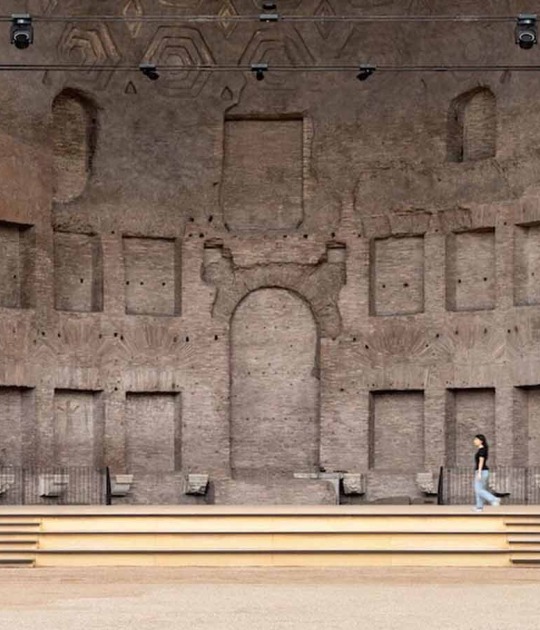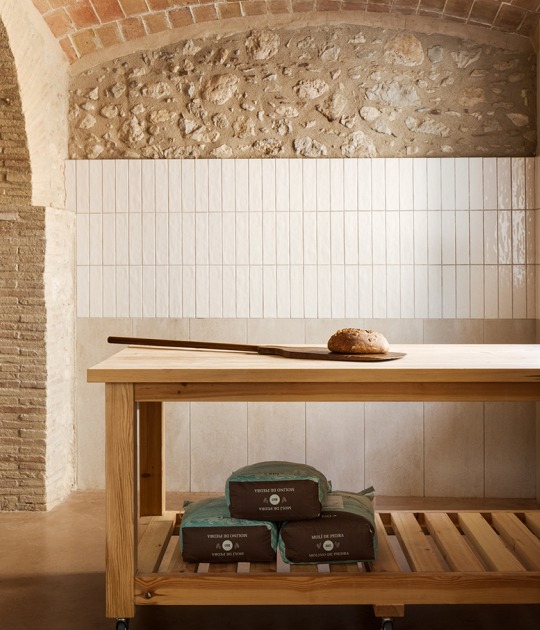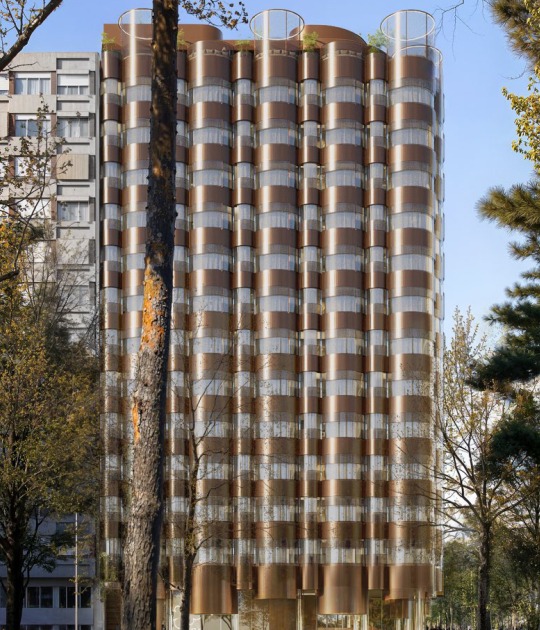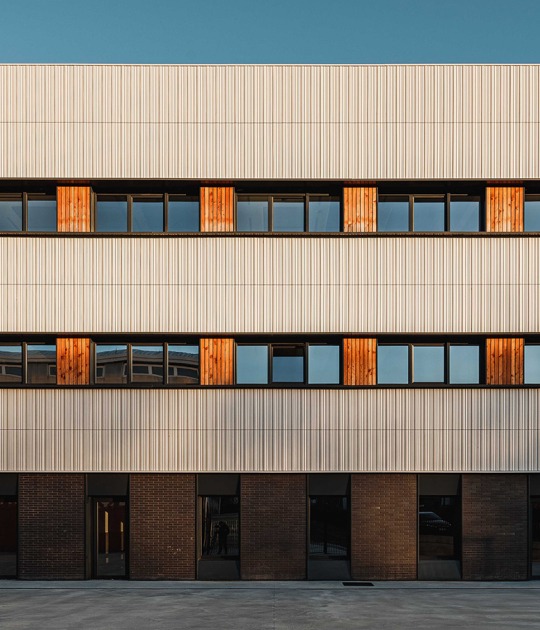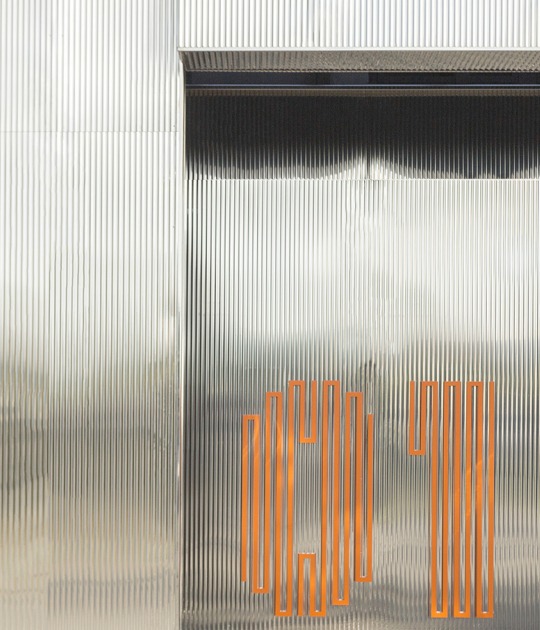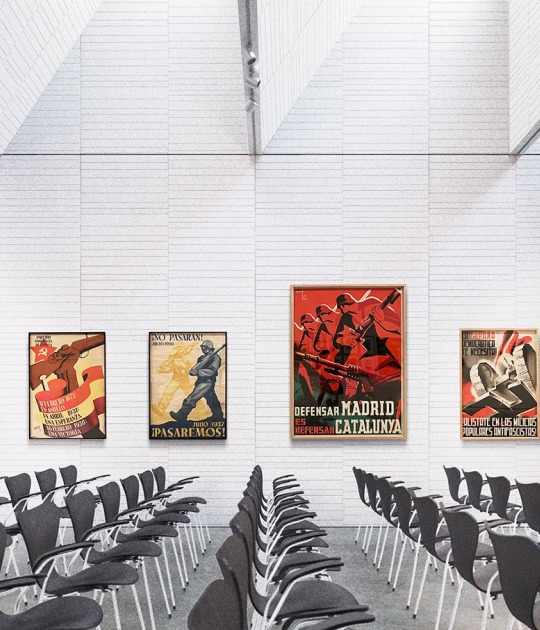The building of the Embassy of Mexico remodelled by Rafael Lorente was originally built between 1850 and 1880 and is located in an area with a large presence of historic buildings, which creates an environment conducive to its remodeling and recycling. The architect segregates the program on the different existing floors. The ground floor houses the exhibition hall, while the Embassy's offices are located on the first floor and are accessed through a separate entrance. In the second one, the Media Library is located with its reading and storage room, as well as the office of the Cultural Attaché.
The mixed structural system of brick load-bearing walls together with metal pillars and beams on the ground floor allows to generate a diaphanous space to host the exhibition program, and the mezzanines of noble wood and ceramic tile accentuate the character of the building. The patios next to the west dividing wall provide light and ventilation, and enable the organization of the offices of the Embassy around it. The ambassador's office is located hierarchically in the front of the building, with excellent lighting and a visual link to the street.
Description of project by Rafael Lorente
The remodeling and recycling works for the Embassy of Mexico will be carried out in a building located at 514 25 de Mayo Street, near the corner of Treinta y Tres Street, in the heart of the Old City of Montevideo. Very close to the Plaza Matriz, the historic center of the city with the relevant presence of buildings such as the Cabildo, the Cathedral, the Club Uruguay, the Ministry of Public Works, etc. In the area, buildings such as the Cultural Center of Spain, the IDB headquarters and the Embassy of Chile, among others, have recently been built, which allows a natural insertion of this new program.
The existing building was originally built around 1850-1880 with a commercial destination on the ground floor and housing on the top floor. It consists of a ground floor occupying the entire property with three patios for air and light on its west wall (385m). A top floor also 385m in size but with a large free space as a great central patio, towards which most of the living spaces are linked, and a rooftop floor with constructions on the front of the building, leaving the upper terrace on level 1 completely free.
The average height of the mezzanines of the ground floor and the first level is four meters, which allows the conditioning of different destinations.
The construction is based on thick bearing walls of exposed brick, combined on the ground floor with a cast metal structure in the case of some pillars, and profiles in the case of beams and other pillars. This type of construction allows the necessary flexibility in the ground floor to condition the large exhibition hall.
The mezzanines are resolved on the basis of beams of noble woods, on which ceramic tiles and the existing sub-floors have been placed. This system gives the construction a strong character that the proposal aims to enhance. In the case of the offices of the first level, all of them have been arranged so as to be directly linked to the large central space, being the same source of light and ventilation of all the activities of the Embassy offices. This large space has been covered with a metal structure with glazed enclosure based on thermo panels, to give it the necessary visual, thermal comfort, etc.
The office of the Ambassador is located hierarchically towards the front of the building where it has excellent lighting as well as the visual link to the street. The walls of the large ground floor exhibition hall will be plastered and coated, painted white, in order to generate a large exhibitor wall suitable for all types of exhibitions and events, complemented by an adequate lighting system as well as air conditioning. It is proposed that this space be the most transparent and flexible to allow the installation of different exhibitions, events, large meetings, etc. It is proposed a direct independent access from 25 de Mayo Street, and different access to the offices of the Embassy, all located on the first level.
In the second level, the Media Library is located, with the corresponding reading room and book deposit, as well as the office of the Cultural Attaché. It is planned to use the existing upper floor terrace for exhibitions and outdoor walks, visualizing from there the large central space of the first level. The large space works as a true heart of the building from which it is possible to visualize all the activities, both the Cultural Center and the Embassy. It incorporates in this space, a comfortable staircase as well as a transparent elevator to facilitate communications in vertical.




























